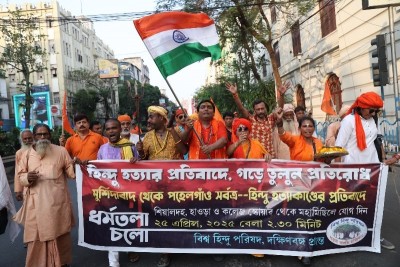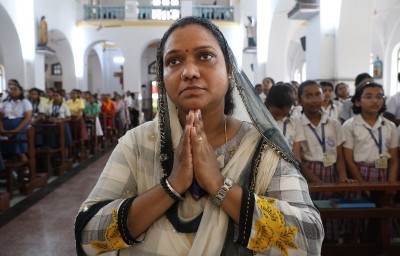 India-Western Media
India-Western Media
Clouds on the Horizon: Why western media’s anti-India narrative threatens democracy
As India’s vibrant democracy gears up for its next general elections in 2024, a worrying trend is emerging: the rise of Western media narratives that paint a deeply negative picture of the nation.
This isn’t mere criticism; it’s a sustained campaign of negativity, bordering on deliberate misinformation. The question at the heart of this issue is: why are prominent Western media outlets pushing such an agenda?
For instance, the most recent narrative making the headlines across outlets in the West is that India is allegedly carrying out ‘Transnational Repression’.
At the center of it is Gurpatwant Singh Pannun, a Khalistan separatist, and self-proclaimed leader, against whom the FBI thwarted a murder-for-hire plan.
Pannun has openly threatened to blow up Air India flights and again threatened to attack the Indian parliament, both of which the Western media conveniently forgot to mention, but that is a story for another time.
On this issue, the White House spokesperson Adrienne Watson said “they (India) stated that activity of this nature was not their policy … We understand the Indian government is further investigating this issue and will have more to say about it in the coming days. We have conveyed our expectation that anyone deemed responsible should be held accountable,” clearly stating that India was unaware and is serious about getting to the bottom of the allegations.
Few months back, Canadian PM Justin Trudeau, without any fact or evidence whatsoever, publicly accused India of allegedly killing Khalistani extremist and terrorist Hardeep Nijjar.
The media outlets lept at the chance, without once questioning or looking for any factual proof or evidence in the allegations. Again, all the news outlets failed to mention that Nijjar was a terrorist, and had been in Pakistan to provide arms training camps.
When sources such as Pakistan’s ISI-backed Pieter Friedrich are quoted to discuss India, it is up to readers to reject such unvarnished propaganda.
Now getting back to why are prominent Western media outlets pushing such an agenda?
There may be a myriad of reasons, but here we aim to present a few reasons as to why this targeted Anti-India narrative seems to be emerging from the west.
India’s growing economic and strategic clout isn’t exactly music to the ears of a West accustomed to global dominance. Western media, often seen as an extension of foreign policy, could be attempting to discredit India to weaken its international influence.
Domestic opposition political agenda within Western nations, particularly those with large Indian diaspora populations, can influence media coverage. Certain political factions might find it beneficial to paint India in a negative light to further their own objectives.
In the competitive world of news, negativity often sells. Stories highlighting social issues, religious tensions, or political controversies in India attract more clicks and eyeballs than nuanced reportage on its accomplishments. This tendency towards sensationalism contributes to a distorted image of the country. Several media outlets in the west, including the most prominent ones, are under tremendous financial pressure to survive and operate. Such clickbait kind of stories may
Western media often cherry-picks issues in India while ignoring similar or worse problems in other nations. This selective focus creates a false impression of an India mired in perpetual turmoil, overlooking its vibrant democracy, thriving economy, and remarkable social progress. Many Western journalists covering India lack an in-depth understanding of its complex cultural and historical context. This leads to misinterpretations, skewed reporting, and the perpetuation of outdated colonial narratives.
As India heads towards general elections next year, it is expected that the road to a peaceful democratic process will be hindered by foreign-funded protests and misinformation campaigns.
(Text courtesy: Khalsavox.com)
Support Our Journalism
We cannot do without you.. your contribution supports unbiased journalism
IBNS is not driven by any ism- not wokeism, not racism, not skewed secularism, not hyper right-wing or left liberal ideals, nor by any hardline religious beliefs or hyper nationalism. We want to serve you good old objective news, as they are. We do not judge or preach. We let people decide for themselves. We only try to present factual and well-sourced news.







